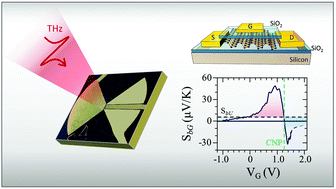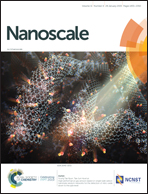Thermoelectric terahertz photodetectors based on selenium-doped black phosphorus flakes†
Abstract
Chemical doping of bulk black phosphorus is a well-recognized way to reduce surface oxidation and degradation. Here, we report on the fabrication of terahertz frequency detectors consisting of an antenna-coupled field-effect transistor (FET) with an active channel of Se-doped black phosphorus. Our devices show a maximum room-temperature hole mobility of 1780 cm2 V−1 s−1 in a SiO2-encapsulated FET. A room-temperature responsivity of 3 V W−1 was observed, with a noise-equivalent power of 7 nW Hz−1/2 at 3.4 THz, comparable with the state-of-the-art room-temperature photodetectors operating in the same frequency range. The inclusion of Se dopants in the growth process of black phosphorus crystals enables the optimization of the transport and optical performances of FETs in the far-infrared with a high potential for the development of BP-based electro-optical devices. We also demonstrate that the flake thickness can be tuned according to the target application. Specifically, thicker flakes (>80 nm) are suitable for applications in which high mobility and high speed are essential, thinner flakes (<10 nm) are more appropriate for applications requiring high on/off current ratios, while THz photodetection is optimal with flakes 30–40 nm thick, due to the larger carrier density tunability.

- This article is part of the themed collection: Editor’s Choice: Thermoelectric nanostructures


 Please wait while we load your content...
Please wait while we load your content...